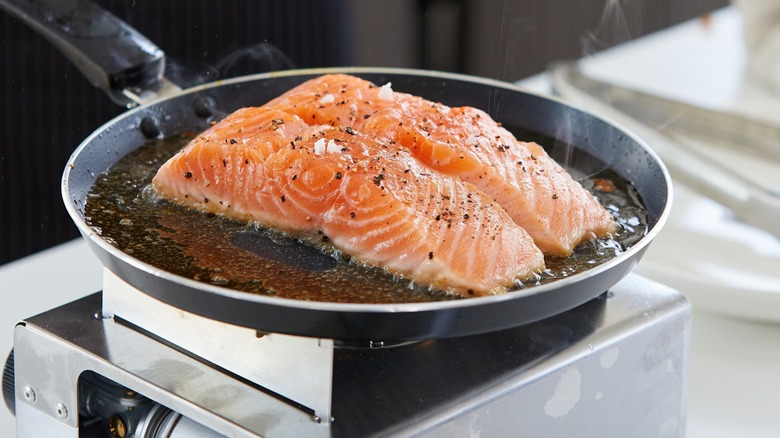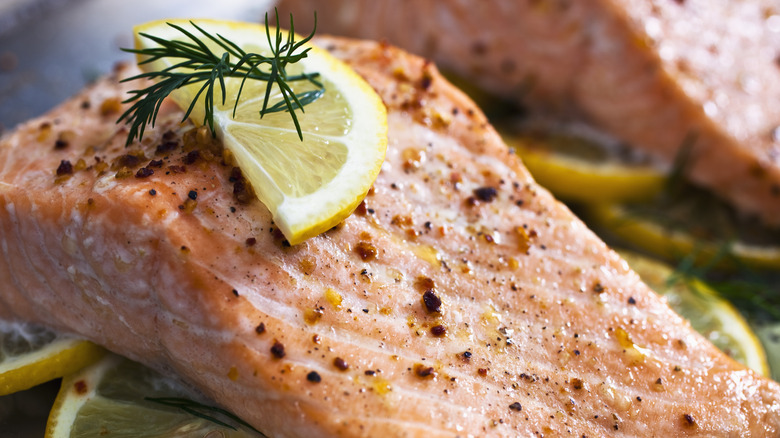You Don't Need A Thermometer For Salmon. Just Look At The Gradient
A meat thermometer can be an incredibly useful tool in the kitchen, especially when it comes to measuring the degree to which your steak is cooked. Or, if you're making a protein like chicken, which needs to reach an internal temperature of 165 degrees Fahrenheit before it's safe to eat (per the U.S. Department of Agriculture), having one of these devices nearby can come in handy. As for fish, the USDA recommends that salmon and other varieties come to an internal temperature of 145 degrees Fahrenheit before you dig in. But unlike with chicken and steak, it is easy to tell if your salmon is done without sticking in a thermometer.
This method typically only applies if you're pan-frying salmon, but it's a helpful one to keep in mind. After a few minutes on the stove, check the gradient on the side of the fish. You'll see a white strip on the bottom of the salmon where it has been cooked so far, while the raw upper portion will look the same as when you removed it from the package: pink and translucent. When approximately half of your fish has turned white, you'll know it's time to flip it — no thermometer necessary.
How to tell if your salmon is done cooking without a thermometer
Not only can the gradient of your salmon tell you when it's time to flip, but it can also tell you when the fish is done cooking. If the gradient is practically gone, meaning the entire fish has turned from translucent pink to almost white, that's a good indication it's ready to be removed from the stove. Keep in mind that when this is the case (or when the fish reaches 145 degrees Fahrenheit), it's considered well done. Some chefs like to plate their salmon at medium (about 125 degrees Fahrenheit) or medium well (about 135 degrees Fahrenheit) — and if either of these is what you're going for, you will see some pink in the center.
Unlike chicken, salmon can go from medium to well-done pretty quickly, so you'll want to keep a close eye on your fish's gradient throughout cooking to know when it's time to stop. The timeframe ultimately depends on how hot your pan is and how thick your salmon is. But in general, one side should turn white after about four minutes at medium-high heat. Then aside from assessing its color, another way to test if it's done is to wiggle a little fish off the top — if it flakes, you're probably good to go.

